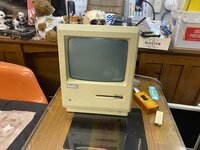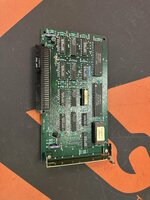I've recently acquired this interesting Apple KanjiTalk Font NuBus card... and I'd love to learn more about what it does and it's purpose, etc.
Doing some research, I've found other websites (example from okqubit.net) wondering what this is. I'm assuming it may have something to do with some software limitation on the Macintosh that benefited or required this type of card to use the potentially thousands of characters Kanji has.
I've installed the card in my Macintosh IIx and tried booting to System 7.1 (English) and System 6.0.7 (Kanji) and KanjiTalk (7.0). Nothing seemingly changes on the surface of the operating system. However, I'm sure I may be missing a software component to take advantage of the card.
Here is a dump of the ROM (AM2732B) from the card: ROM dump
Oddly enough, there is no Apple Computer specific markings on the card. Maybe this card was used for development purposes?
I'm attaching some images, hopefully we can figure out how to use this card, as I think it'll be fun.
-Steve
Doing some research, I've found other websites (example from okqubit.net) wondering what this is. I'm assuming it may have something to do with some software limitation on the Macintosh that benefited or required this type of card to use the potentially thousands of characters Kanji has.
I've installed the card in my Macintosh IIx and tried booting to System 7.1 (English) and System 6.0.7 (Kanji) and KanjiTalk (7.0). Nothing seemingly changes on the surface of the operating system. However, I'm sure I may be missing a software component to take advantage of the card.
Here is a dump of the ROM (AM2732B) from the card: ROM dump
Oddly enough, there is no Apple Computer specific markings on the card. Maybe this card was used for development purposes?
I'm attaching some images, hopefully we can figure out how to use this card, as I think it'll be fun.
-Steve








